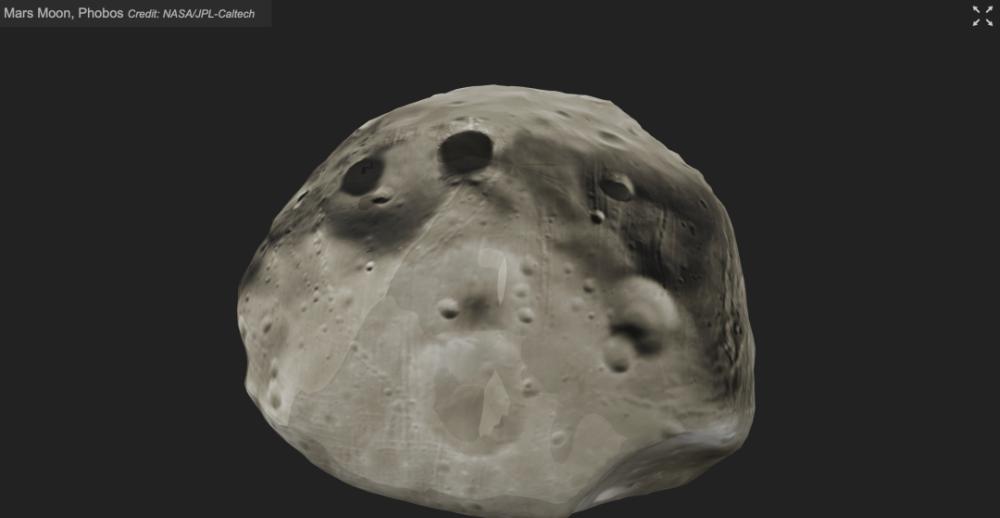Phobos, shot on April 2, 2022 by the Left Mastcam-Z camera. This video amplifies Phobos, the highest frame rate ever recorded on the surface of Mars.
Over the past 18 years, many Mars rovers have photographed Phobos Transit. In 2004, Spirit and Opportunity made the first observations of Phobos, and Curiosity made observations in 2019.
Phobos
Mars' two moons, Phobos and Phobos, were discovered by astronomer Asaph Hall in 1877 at the U.S. Naval Observatory.
In August 1877, Assaf Hall tried to find a moon on Mars using a 66-centimeter refracting telescope, and was encouraged by his wife Angelina as he prepared to give up.
The next night, on August 11, 1877, Assaf Hall first discovered Phobos, and 6 days later. In honor of his discovery, a craters on the lunar surface and at the south pole of Phobos were named Hall.

The size of Phobos is 27 km x 22 km x 18 km.
Credit:Caltech/University of Arizona
Located just 6,000 kilometers from the surface of Mars, Phobos is the closest moon in the solar system to the planet's surface. Phobos orbits Mars 3 times a day, while the longer Phobos orbits 30 hours.
Phobos is approaching the surface of Mars at a rate of 1.8 meters per year, and at this rate, about 50 million years later, Phobos will either fall to the surface of Mars or split into a ring.
Six photos of Phobos from different angles, taken in March 2020 by NASA's Odyssey Orbiter infrared camera.
Credit: NASA/JPL-Caltech/ASU/NASA
The Odyssey orbiter is mainly used to study the surface of Mars, and in recent years, under the leadership of JPL, it has also been used to study Phobos, which can measure the temperature change of Phobos's surface, which provides a basis for an in-depth understanding of Phobos's composition and physical properties. Further research could help resolve the debate about whether Phobos is a captured asteroid or ancient debris that exploded from the surface of Mars as a result of an impact.
In the Photo of December 9, 2019, Phobos is equivalent to the phase of a full moon, meaning that Phobos's surface is large enough to be illuminated by sunlight, and its surface temperature is 27 degrees Celsius (81 degrees Fahrenheit).
In the February 25, 2020 photo, Phobos is equivalent to a lunar eclipse, that is, Phobos is located in the shadow of Mars, and the sunlight does not shine on it at all, when the measured temperature on Phobos's surface was minus 123 degrees Celsius (minus 189 degrees Fahrenheit), which is the lowest temperature measured on Phobos's surface so far.
reference:
[1]https://solarsystem.nasa.gov/moons/mars-moons/phobos/in-depth/
[2]https://solarsystem.nasa.gov/moons/mars-moons/deimos/in-depth/
[3]https://mars.nasa.gov/news/9172/nasas-perseverance-rover-captures-video-of-solar-eclipse-on-mars/